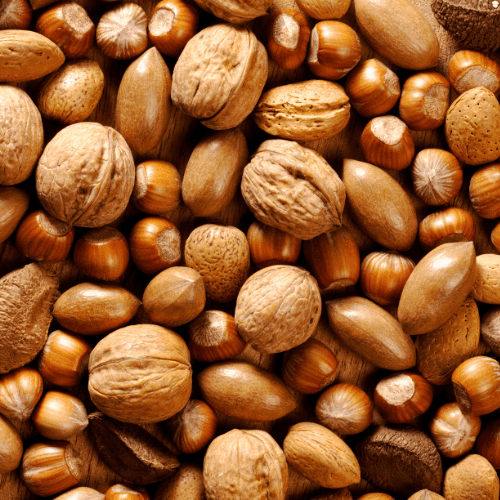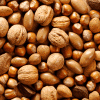Position
Full sun is best for pecan nut trees. Dig a hole of at least 1 metre wide and 2 metres deep. Fill the hole with water before planting your tree to the same level as it was in the nursery pot. Allow 5 metres all around the tree and a good distance from structures and power lines. Keep the soil around the tree free from weeds and grasses.
Size
A pecan nut tree can grow extremely tall. Top a new tree to a height of 1 metre to encourage branching, which forms a framework.
Soil Type
A mixture of well-rotted compost, zinc fertiliser and potting soil or garden soil (if not clay) works well. The plant’s root should be in loose soil with a pH of between 6 and 7. At Just Berry Plants, we stock volcanic rock dust. This contains organic minerals and trace elements, keeping your soil healthy.
Mulch
Mulch around the tree’s base with straw, dry crushed leaves, bark, etc.. Mulch helps to keep the roots moist, reduces soil erosion, increases organic matter and, most importantly, shelters the roots from the harmful rays of the sun. Just remember to keep the mulch away from the actual trunk of the trees as it can cause infection and rot if it is too close to the plant.
Watering
Regular watering is essential for young, newly planted trees. Water them very well and deeply once a week for the first 2 years. For mature trees, soil moisture determines the yield, size and fullness of nuts and the amount of new growth. Water them often enough to keep the soil evenly moist from when the buds swell until harvest.
Fertilising
Paint the trees with white interior latex paint mixed in equal parts with water to protect them from sunburn and attack by flathead boring beetles. Use our slow-release nitrogen-rich all plant fertiliser. Apply 1 teaspoon every 4-5 months.
Pruning
Prune your pecan trees in winter, cutting away dead bark to open the tree to the sunlight.
Pests
Aphids, snails, slugs and borer are the greatest enemies of pecan nut trees. Inspect them regularly and use an organic pesticide if necessary.
Harvesting
Pecan nuts are usually harvested between April and July in South Africa. When they are ripe, their green husk dries and splits open, allowing the nut to fall out.






